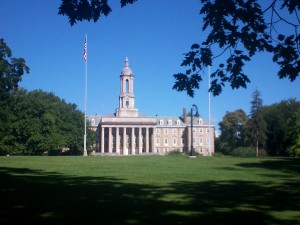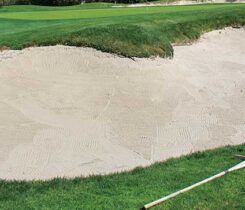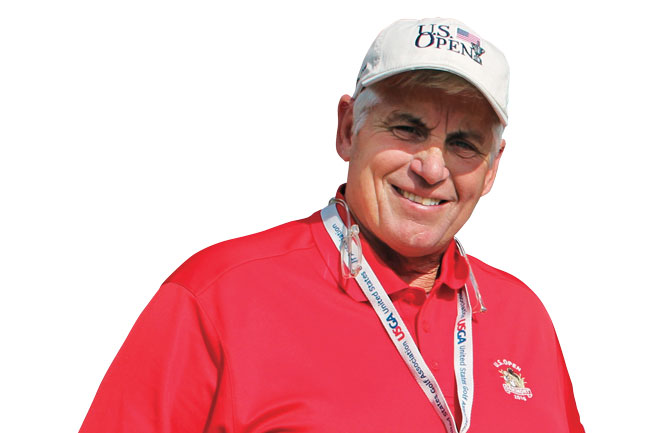Superintendents score hat trick in major tournaments
For the first time ever, the superintendents in charge of the courses where all three majors were played learned their trade from the same university turf program. Are they all graduates of:
1- North Carolina State
2- Penn State
3- University of California/Davis
4- University of Georgia
5- The Ohio State University
A BONUS question follows. But first, a refresher hint on the question above: recall that the Masters was, as always, played at Augusta National in April. The U.S. Open was held at Merion Golf Club near Philadelphia in June. Most recently, the PGA Championship concluded at Oak Hill Country Club in Rochester, N.Y., in August. So, which school has bragging rights?
If you answered “2,” you score a hole in one!
At Augusta, Penn State scores a double with Marsh Benson and Brad Owen, senior director of golf course operations and superintendent, respectively. Merion is managed by Penn State alumnus Matt Shaffer. Penn State graduate Jeff Corcoran is the Oak Hill superintendent.
BONUS: What is the famous link, dating back some 85 years, between Merion and Penn State?
John Kaminski, associate professor of turfgrass science and director of the Golf Course Turfgrass Management program in Happy Valley, notes that Penn State turfgrass and Merion have a shared history longer than the legendary course’s 628-yard, par-5 fourth hole.
Longtime Merion superintendent Joseph Valentine, who managed the course from 1918 until he retired in 1962, witnessed several difficult years for growing turfgrass early in his tenure. In 1927, for instance, the Japanese beetle caused widespread damage throughout the Northeast, and it was a hot, humid summer with many turfgrass diseases. In 1928, Valentine and two colleagues traveled to Penn State President Ralph Hetzel’s office and encouraged him to initiate a turfgrass program that could provide the burgeoning golf industry with the best science-based advice. Hetzel agreed to assign an agronomy faculty member to turfgrass on a half-time basis, and Penn State’s turfgrass program was born.
The fledgling program got a boost in 1932, when a committee led by Valentine persuaded the Pennsylvania General Assembly to appropriate $10,000 – a large amount for that era – for Penn State turfgrass research.











